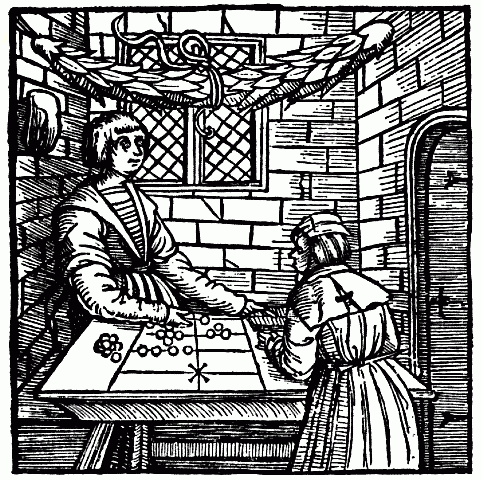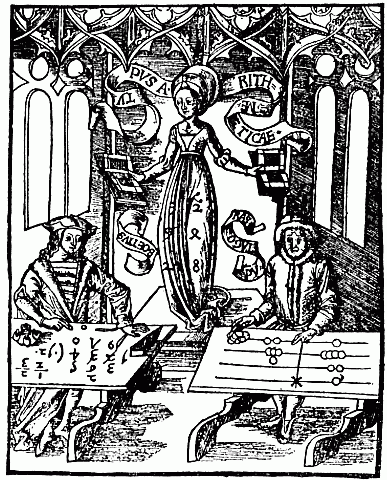
| Read the document called History of Number, and look at these images below. Then tackle the questions below the images. Also see its notes. |
The first image is called Counter Reckoning in 1514 (Churchill, 1960, 35):

The second image is called Arithmeticae with Abacist and Algorist (Churchill, 1960, 40):

Describe each image above and state which part of the document each may best illustrate. Give as much detail as possible in terms of the information provided in the document but contained within the image.
Discuss how the document might be improved and distracted by the inclusion of these images.
Write a short imaginative story for both images.
Eileen M. Churchill makes the argument in her book (1960, 11-23) that children's development takes a similar path to that of hunter-gatherer to civilised people. Attachment to sense organs and concrete thinking should be respected and recognised as the child develops and counts with fingers and thumbs and finds the concept of zero difficult. The child will move from concrete to more abstract thinking but needs to do so carefully, recognising continuing childlike attachments. In what way do you think there are advantages and dangers in equating the development of number in children and the development of number in primitive peoples and civilisation?
Intended to be at Key Skills Communication Level 3